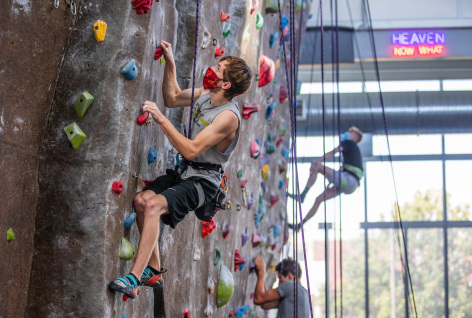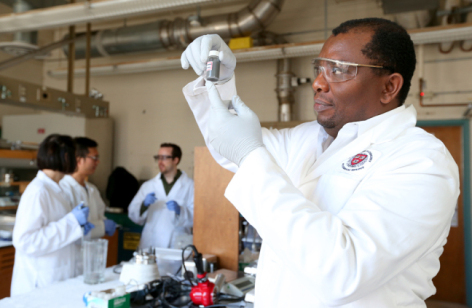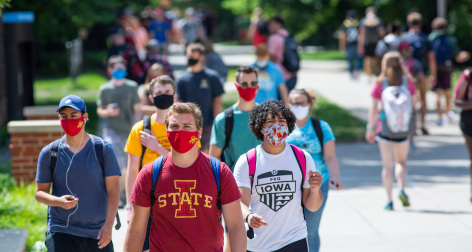The COVID-19 pandemic certainly dominated the headlines this year, but looking back on 2020 there are several good stories and accomplishments to share. Click on each headline to read the full story.
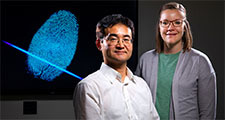
Chemists develop technology to determine age of fingerprints
Chemists may have solved a puzzle of forensic science: How do you determine the age of a fingerprint? The chemists used mass spectrometry tools to analyze fingerprints and found clues in the fatty oils within the prints. More study is needed, but they believe they're on the path to developing a fingerprint-aging technique that could potentially tie a suspect to a crime scene.
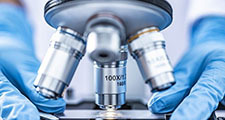
Diagnosing Parkinson's disease with skin samples
A simple skin test can accurately identify Parkinson’s disease and lead to earlier detection of the disease and better outcomes for patients, according to new research. Currently, Parkinson’s disease is diagnosed by clinical signs and symptoms but only definitively diagnosed at autopsy. The researchers conducted a blinded study of 50 skin samples using an assay originally designed to detect mad cow disease.

Replacing sitting with sleep or light activity may improve mood
Moving more and sitting less was a challenge for many, even before the pandemic. Despite disruptions to daily work and exercise routines, research shows substituting prolonged sedentary time with sleep was associated with lower stress, better mood and lower body mass index (BMI), and substituting light physical activity was associated with improved mood and lower BMI across the next year.
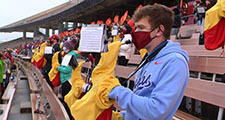
The beat goes on: Cyclone Marching Band adjusts to pandemic
Unlike years past, the Cyclone Marching Band did not take the field at Jack Trice Stadium this fall. Instead, the band modified its pregame and halftime performances from the bleachers. The band also implemented several other mitigation strategies, including custom-designed face coverings and bell covers.
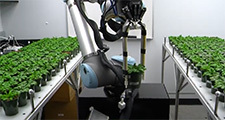
ISU robot still reports to work even during a pandemic
Even while the pandemic has halted many everyday activities, a robot at Iowa State University continues to toil away in its laboratory, oblivious to the coronavirus outbreak. Scientists studying how drought affects plants depend on the data gathered by the robot and call the autonomous system “amazingly reliable.”

Students design new police gear
Police officers’ duty belts have not been updated in a century. Iowa State University industrial design students want to change that, and more. They collaborated with the ISU Police Department to examine the issues police officers face with their uniforms, gear and vehicles – and what designers can do to help solve those problems.
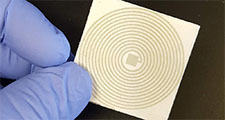
Engineers developing no-touch, fast-scan test for COVID-19
Iowa State's Nigel Reuel is leading development of a closed, contact-free diagnostic sensing system that could be used to quickly test for COVID-19 or other outbreaks. The test would not require tents set up in parking lots. No long lines of cars. No medical staff in full protective gear. No waiting for results.

Businesses turn to social networks to build relationships during pandemic
Networking with clients over dinner and drinks or out on the golf course is not an option for many companies during the pandemic. An Iowa State University study illustrates how businesses can still maintain and build those relationships using online social networks. Researchers say the concept is not new, but the COVID-19 pandemic has made it more relevant.
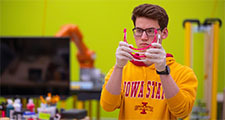
Students 3D-print face shields for Iowa hospitals
Hospitals were in desperate need of personal protective equipment this spring due to the COVID-19 pandemic. An Iowa State University team, in partnership with Alliant Energy, found a way to help by manufacturing and distributing face shields to Iowa hospitals.
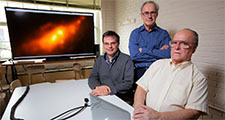
77-year-old astronomer makes galaxy discovery
Iowa State astronomers have revealed that a well-known, nearby galaxy has a rare double-nucleus structure. First author of the paper reporting the discovery is Allen Lawrence, a 77 -year-old who went back to school to study astronomy after retiring from a long career as an electrical engineer.
